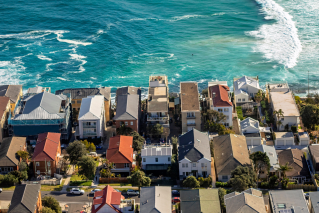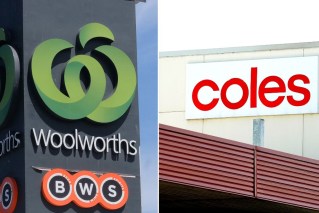RBA may deliver interest rates reprieve as inflation falls

Rising inflation that sparked the biggest cost-of-living crisis in a generation is receding faster than expected.
This increases the chances there will be another pause of interest rates hikes in August.
Annual growth in the Consumer Price Index (CPI) fell to 6 per cent over the June quarter – the lowest level since the depths of the pandemic in 2021 – official figures revealed on Wednesday.
Lower prices for key discretionary goods like clothing, furniture and appliances led the easing, though that was offset by the fastest increase in rents since 1988, the ABS figures showed.
Inflation was expected to fall over the June quarter as the prices for goods ease from 2022 highs, but inflation for services was also weaker than anticipated – delivering the surprise result.
Price growth is easing more rapidly than the Reserve Bank anticipated, which experts said could see central bankers extend their July interest rate reprieve into August next week.
ANZ senior economist Adelaide Timbrell said that with the cash rate now in what the RBA calls “clearly restrictive” territory, the sharp drop in June-quarter inflation could spark a rate hiatus.
“A 4.1 per cent cash rate may be restrictive enough to bring inflation down,” she said.
Sean Langcake, head of macroeconomic forecasting at BIS Oxford Economics Australia, says a rate pause next month is probable, with the further possibility that mortgage bills may even remain on hold.
“They’re already in wait-and-see mode and this [inflation result] is below their forecast,” Mr Langcake said.
“If they don’t raise rates in the next month or two then they’re probably done.”
Inflation eases
There were two key factors in the inflation story over the June quarter – goods and services.
Firstly, popular goods such as appliances, clothing and furniture have continued to become cheaper as COVID-related global supply chain problems are resolved, delivering disinflation.
Goods inflation fell to 5.8 per cent annually over the June quarter, down from 7.6 per cent.
On the other side, however, services inflation has been rising as wages growth and lacklustre productivity raise business costs against a backdrop of strong demand (enabling price hikes).
This has been a key concern for the RBA, which has warned that strong price rises for services across hospitality, tourism, and health and education could derail its plans to return inflation to target.
But EY chief economist Cherelle Murphy said that services prices were actually much weaker than expected over the June quarter, which will help abate the RBA’s concerns.
She said that while services inflation rose 6.3 per cent in annual terms – driven by soaring rents, takeaway food prices and overseas holiday bills – the quarterly rate of growth actually eased.
“The results were also below the Reserve Bank’s May forecasts of 6.3 per cent for headline inflation, and 6.0 per cent for core in the June quarter,” Ms Murphy said.
Interest rates pause on the horizon
Ms Murphy said the surprise inflation result takes the pressure off central bankers to hike interest rates in August, which was the predominant reaction from other economists on Wednesday.
CreditorWatch chief economist Anneke Thompson said upcoming jobs data will be crucial but that the likelihood of a further cash rate rise in August is now lower.
“The board will be hoping to see some softening in the unemployment rate, to reduce the chance of further pressure on wages,” she said.
It comes as a survey from progressive think tank the Australia Institute on Wednesday found that only 5 per cent of 1004 people surveyed thought wages were to blame for high inflation.
“Further interest rate rises would only further hurt households,” the Australia Institute’s Greg Jericho said.
Mr Langcake said that the “million-dollar question” for the Reserve Bank would be whether the interest rate hikes to date would be enough to deliver inflation back to its 2 to 3 per cent target by mid-2025.
It’s possible that when goods disinflation has run its course the nation is left with an annual inflation rate below where it is currently but still stubbornly above 3 per cent, he said.
“There’s nothing that magically assures us that disinflation ends with inflation in the target range,” he said.
That raises the possibility that the RBA may pause its rate hikes for a period and then resume hikes again if it develops a view that more is needed to return inflation to its 2 to 3 per cent target.








